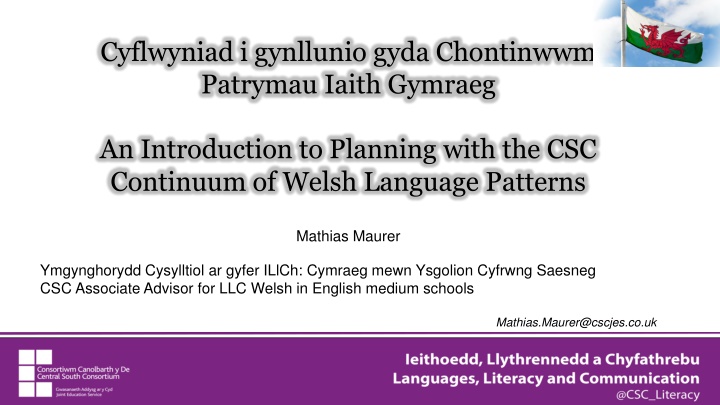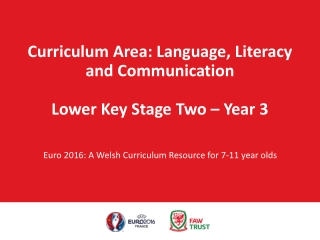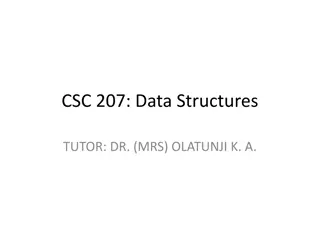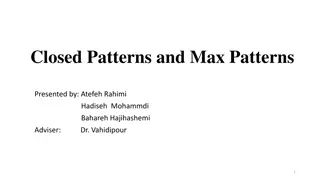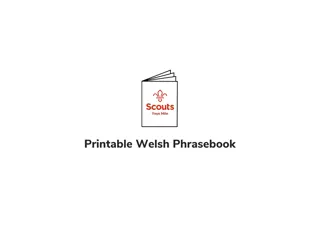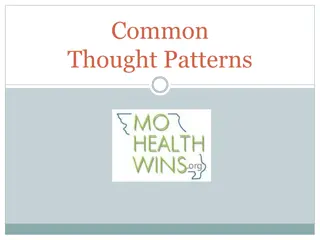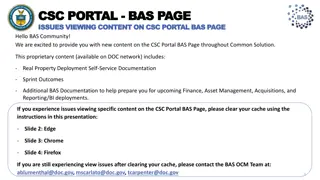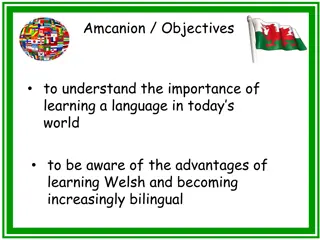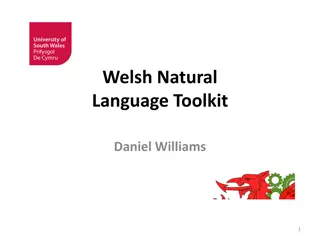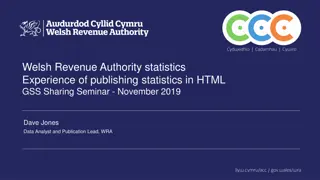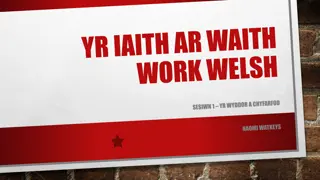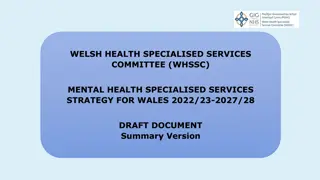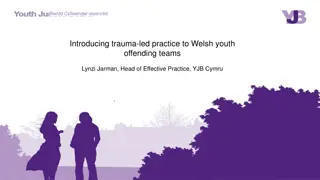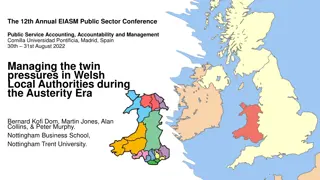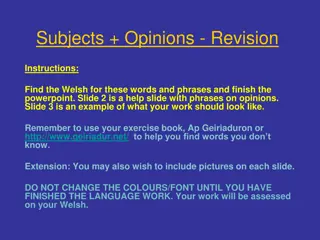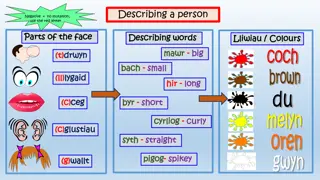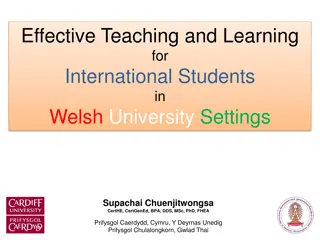Planning with CSC Continuum of Welsh Language Patterns
This session by Mathias Maurer provides information and examples to support planning with the CSC Continuum of Welsh Language Patterns. It covers introducing new language patterns, transferring familiar patterns to new contexts, planning for progression, and utilizing the continuum for coherent development of language patterns and grammar.
Download Presentation

Please find below an Image/Link to download the presentation.
The content on the website is provided AS IS for your information and personal use only. It may not be sold, licensed, or shared on other websites without obtaining consent from the author.If you encounter any issues during the download, it is possible that the publisher has removed the file from their server.
You are allowed to download the files provided on this website for personal or commercial use, subject to the condition that they are used lawfully. All files are the property of their respective owners.
The content on the website is provided AS IS for your information and personal use only. It may not be sold, licensed, or shared on other websites without obtaining consent from the author.
E N D
Presentation Transcript
Cyflwyniad i gynllunio gyda Chontinwwm Patrymau Iaith Gymraeg An Introduction to Planning with the CSC Continuum of Welsh Language Patterns Mathias Maurer Ymgynghorydd Cysylltiol ar gyfer ILlCh: Cymraeg mewn Ysgolion Cyfrwng Saesneg CSC Associate Advisor for LLC Welsh in English medium schools Mathias.Maurer@cscjes.co.uk
Purpose of this session Pwrpas y sesiwn hon To provide participants with information and practical examples to support planning with the CSC Continuum of Welsh Language Patterns Rhoi gwybodaeth ac enghreifftiau ymarferol i'r cyfranogwyr i gefnogi cynllunio gyda Chontinwwm Patrymau Iaith Gymraeg CCD
Cynnwys Contents Rhesymeg Rationale Ym mha gyd-destun y dylen ni gyflwyno patrwm iaith newydd am y tro cyntaf? In what context should we first introduce a new language pattern? How should we plan for transferring familiar patterns to new contexts and other AoLEs? Sut dylem gynllunio ar gyfer trosglwyddo patrymau cyfarwydd i gyd- destunau newydd ac MDPh eraill? How should we plan for progression? Sut y dylem gynllunio ar gyfer cynnydd?
2. How should we plan for transferring familiar patterns to new contexts and other AoLEs? 1. In what context should we first introduce a new language pattern? 3. How should we plan for progression? Consider transferring patterns to other contexts once the learners are well familiar with them. This includes transfer to other AoLEs. Consider introducing a new pattern in natural, frequently occurring contexts, such as situations that are regularly part of the school day. Use the continuum to plan a coherent progression of language patterns and grammatical depth.
1. In what context should we first introduce a new language pattern? If we introduce a new language pattern in a context that occurs during most school days, then we will be able to continue using this pattern in this context, during most days. Curriculum for Wales: Designing your Curriculum In what contexts do our learners want to be able to use their Welsh? Learning to say every-day phrases in Welsh that we currently say in English will allow us to practise these Welsh phrases extensively, in authentic situations. Using patterns in genuine, authentic situations will motivate learners and teachers. Using the continuum to plan these phrases will ensure we plan for progression and develop patterns and grammar in a coherent way.
In what context should we first introduce a new language pattern? How about introducing a new pattern first in a cross-curricular context, for example a humanities lesson? If we do not choose a natural, frequently occurring context for the first introduction, then we will not have the same immediate and frequent practice opportunities in authentic situations. We must not assume teachers and learners will be able to transfer patterns without additional explicit teaching.
First introduction of a new language pattern: choosing a context Natural, frequently occurring contexts: Going out to play: Do you have a coat? First thing in the morning: Do you have your homework? Classroom items: I don t have a pencil!
First introduction of a new language pattern: choosing a context Oes pensil gyda ti? Do you have a pencil? Oes, mae pensil gyda fi. Yes, I have a pencil. Oes ci gyda ti? Do you have a dog? Classroom items Nac oes, does dim rwber gyda fi. No, I don t have a rubber. Oes, mae pysgodyn aur gyda fi. Yes, I have a goldfish. Nac oes, does dim brawd gyda fi. No, I don t have a brother. Going out to play Oes cot gyda ti? Do you have a coat? Oes, mae cot gyda fi. Yes, I have a coat. Nac oes, does dim het gyda fi. No, I don t have a hat.
First introduction of a new language pattern Classroom items Classroom items PS2 Oes gyda ti? Oes, mae pensil rwber naddwr glud pren mesur diod snac gyda fi Nac oes, does dim
First introduction of a new language pattern: Classroom items Classroom items PS2 Beth sydd gyda ti? Mae pensil rwber naddwr glud pren mesur diod snac gyda fi Does dim
First introduction of a new language pattern Going out to play Going out to play PS2 Oes gyda ti? Oes, mae cot snac diod siwmper het p l eli haul gyda fi Nac oes, does dim
First introduction of a new language pattern Going out to play Going out to play PS2 Beth sydd gyda ti? Mae cot snac diod siwmper het p l eli haul gyda fi Does dim
2. How should we plan for transferring familiar patterns to new contexts and other AoLEs? Curriculum for Wales: They also need to be supported to apply their learning and use their Welsh in new contexts. Step 2: Step 3: Step 4: Step 1: Plan a meaningful experience / task the learners will work towards over a number of sessions. Identify the new vocabulary learners will need to use together with the familiar patterns. Plan a sequence of lessons that builds up to the meaningful experience/task. Identify patterns the learners are already familiar with and that lend themselves to the new context.
Expressive Arts focus Welsh artists Step 1: Identify patterns the learners are already familiar with and that lend themselves to the new context.
Expressive Arts focus Welsh artists Example 1: Be a reporter! Interview your friends and ask them about their views. Step 2: Oracy - dialogue Plan a meaningful experience / task the learners will work towards over a number of sessions. Example 2: Create a narrated presentation featuring Welsh artists work. Writing + recording voice over
Create a narrated presentation featuring Welsh artists work Cross-curricular context (new) First introduction (familiar) Step 3: Talking about which art or artists I like PS2 Pa artist/lun wyt ti n hoffi? Talking about what fruit I like PS2 Pa ffrwythau wyt ti n hoffi? Identify the new vocabulary learners will need to use together with the familiar patterns. Dw i n hoffi Dw i ddim yn hoffi Kyffin Williams Rhiannon Gwilym Prichard Shani Rhys James Dw i n hoffi Dw i ddim yn hoffi afal mefus oren grawnwin banana peren Names of paintings/artwork
Create a narrated presentation featuring Welsh artists work. Cross-curricular context (new) First introduction (familiar) Step 3: Talking about what fruit I like PS2 Wyt ti n hoffi ? Talking about which art or artists I like PS2 Wyt ti n hoffi ? Identify the new vocabulary learners will need to use together with the familiar patterns. Ydw, dw i n hoffi afal mefus oren grawnwin banana peren Ydw, dw i n hoffi Kyffin Williams Rhiannon Gwilym Prichard Shani Rhys James Nac ydw, i ddim yn hoffi Nac ydw, i ddim yn hoffi Names of paintings/artwork
Create a narrated presentation featuring Welsh artists work Cross-curricular context (new) First introduction (familiar) Step 3: Talking about what fruit I like PS2 Beth ydy dy hoff fwyd? Talking about which art or artists I like PS2 Beth ydy dy hoff lun? Identify the new vocabulary learners will need to use together with the familiar patterns. Fy hoff fwyd ydy pysgod a sglodion pasta pista cinio rhost spaghetti cawl Fy hoff lun ydy (+ names of paintings you study)
Create a narrated presentation featuring Welsh artists work Cross-curricular context (new) First introduction (familiar) Step 3: Giving reasons why I like/dislike fruit PS2 Pam? Giving reasons why I like/dislike a painting PS2 Pam? Identify the new vocabulary learners will need to use together with the familiar patterns. achos mae n flasus felys fendigedig wych sur ych-a-fi achos mae n hardd lliwgar fywiog fendigedig wych ddiflas
Create a narrated presentation featuring Welsh artists work. A suggested teaching sequence Step 4: Drilling new vocabulary with the chosen patterns Oracy activities developing the target language Plan a sequence of lessons that build up to this meaningful experience/task. Reading activities, using model texts with target patterns and vocabulary. Focused writing practice, practising target patterns and vocabulary, with scaffolding Gradually withdraw scaffolding and create digital presentation.
3. How should we plan for progression? Use the continuum to plan a coherent progression of language patterns Progression Step 2 First person Progression Step 2 Third person: names Progression Step 3 Third person: pronouns Beth wyt ti n wneud? What are you doing? Beth mae Sam yn wneud? What is Sam doing? Beth mae e n/hi n wneud? What is he/she doing? Dw i n darllen. I am reading. Mae Sam yn darllen. Sam is reading. Mae e n/hi n darllen. He/She is reading. Dw i ddim yn ysgrifennu. I am not writing. Dydy Ffion ddim yn ysgrifennu. Ffion is not writing. Dydy e/hi ddim yn ysgrifennu. He/She is not writing.
How should we plan for progression? Activities in the classroom PS2 Beth wyt ti n wneud? Dw i n Dw i ddim yn darllen ysgrifennu canu siarad lliwio arlunio gweithio
How should we plan for progression? Activities in the classroom PS2 Wyt ti n ? Ydw, dw i n Nac ydw, dw i ddim yn darllen ysgrifennu canu siarad lliwio arlunio gweithio
Progression Step 1 Progression Step 2 Progression Step 3 Beth wyt ti n fwyta? Beth wyt ti n wneud? Beth wyt ti n wneud? Wyt ti n ? Wyt ti n ? Beth mae Sam yn wneud? Beth mae Sam yn wneud? Ydy Sam yn ? Ydy Sam yn ? Beth mae e n / hi n wneud? Ydy e n / hi n ?
Progression Step 2 1st person 3rd person Beth wyt ti n wneud? Ydw Nac ydw Ydy Nac ydy Wyt ti n ? Dw i n Dw i ddim yn Mae Sam yn Dydy Sam ddim yn Beth mae Sam yn wneud? darllen ysgrifennu canu Ydy Sam yn ? siarad lliwio Pwy sy n ? arlunio gweithio
Progression Step 3 1st person 3rd person Beth mae e n / hi n wneud? Beth wyt ti n wneud? Ydw Nac ydw Ydy Nac ydy Ydy e n / hi n ? Mae Sam yn Dydy Sam ddim yn Wyt ti n ? Dw i n Dw i ddim yn Mae e n/hi n Dydy e/hi dim yn Gyda phwy wyt ti n ? Beth mae Sam yn wneud? darllen ysgrifennu Gyda phwy mae Sam yn ? Ydy Sam yn ? canu siarad lliwio Pwy sy n ? arlunio gweithio
Dilyniant cydlynol a thrylwyr o adeiladwyr brawddegau ar gyfer cyd-destunau naturiol, sy'n digwydd yn aml A coherent and rigorous progression of sentence builders for natural, frequently occurring contexts Enghraifft A: Eitemau ystafell ddosbarth Example A: Classroom items
Classroom items PS2 Oes gyda ti? Oes, mae pensil rwber naddwr glud pren mesur diod snac gyda fi Nac oes, does dim
Classroom items PS2 Beth sydd gyda ti? Mae pensil rwber naddwr glud pren mesur diod snac gyda fi Does dim
Classroom items PS2 Oes gyda Sam? Oes, mae pensil rwber naddwr glud pren mesur diod snac gyda Sam Nac oes, does dim
Classroom items PS2 Beth sydd gyda Sam? Mae pensil rwber naddwr glud pren mesur diod snac gyda Sam Does dim
Classroom items PS3 Oes gyda Sam/fe/hi? Oes, mae pensil rwber naddwr glud pren mesur diod snac gyda Sam/fe/hi Nac oes, does dim
Classroom items PS3 Beth sydd gyda Sam/fe/hi? Mae pensil rwber naddwr glud pren mesur diod snac gyda Sam/fe/hi Does dim
Dilyniant cydlynol a thrylwyr o adeiladwyr brawddegau ar gyfer cyd-destunau naturiol, sy'n digwydd yn aml A coherent and rigorous progression of sentence builders for natural, frequently occurring contexts Enghraifft B: Mynegi Teimladau Example B: Expressing feelings
Expressing feelings PS1 Sut wyt ti? Dw i n hapus drist grac dda iawn gyffrous Dw i ar ben y byd. Dw i wedi blino.
Expressing feelings PS2 Sut wyt ti n teimlo? Dw i n Dw i ddim yn hapus drist grac dda iawn gyffrous flinedig fendigedig ffantasteg ofnadwy weddol Dw i ar ben y byd. Dw i wedi blino.
Expressing feelings PS2 Wyt ti n ? Ydw, dw i n Nac ydw, dw i ddim yn hapus drist grac dda iawn gyffrous flinedig fendigedig ffantastig ofnadwy weddol Wyt ti ? Ydw, dw i Nac ydw, dw i ddim ar ben y byd wedi blino
Expressing feelings PS2 Sut mae Sam yn teimlo? Mae Sam yn Dydy Sam ddim yn* hapus drist grac dda iawn gyffrous flinedig fendigedig ffantastig ofnadwy weddol Mae Sam Dydy Sam ddim ar ben y byd. wedi blino.
Expressing feelings PS2 Ydy Sam yn ?* Ydy, mae Sam yn* Nac ydy, dydy Sam ddim yn* hapus drist grac dda iawn gyffrous flinedig fendigedig ffantastig ofnadwy weddol Ydy Sam ? Ydy, mae Sam Nac ydy, dydy Sam ddim ar ben y byd wedi blino
Expressing feelings PS3 Sut mae e n/hi n teimlo? Mae e n/hi n Dydy e/hi ddim yn* hapus drist grac dda iawn gyffrous flinedig fendigedig ffantastig ofnadwy weddol Mae e/hi Dydy e/hi ddim ar ben y byd. wedi blino.
Expressing feelings PS3 Ydy e n/hi n ? Ydy, mae e n/hi n Nac ydy, dydy e/hi ddim yn* hapus drist grac dda iawn gyffrous flinedig fendigedig ffantastig ofnadwy weddol Ydy e/hi ? Ydy, mae e/hi Nac ydy, dydy e/hi ddim ar ben y byd wedi blino
Dysgu gydan gilydd Learning together Learning together Introducing and practising language patterns in contexts that occur throughout the school day will allow adults and learners together to practise the Welsh they need to communicate in a meaningful and authentic way.
